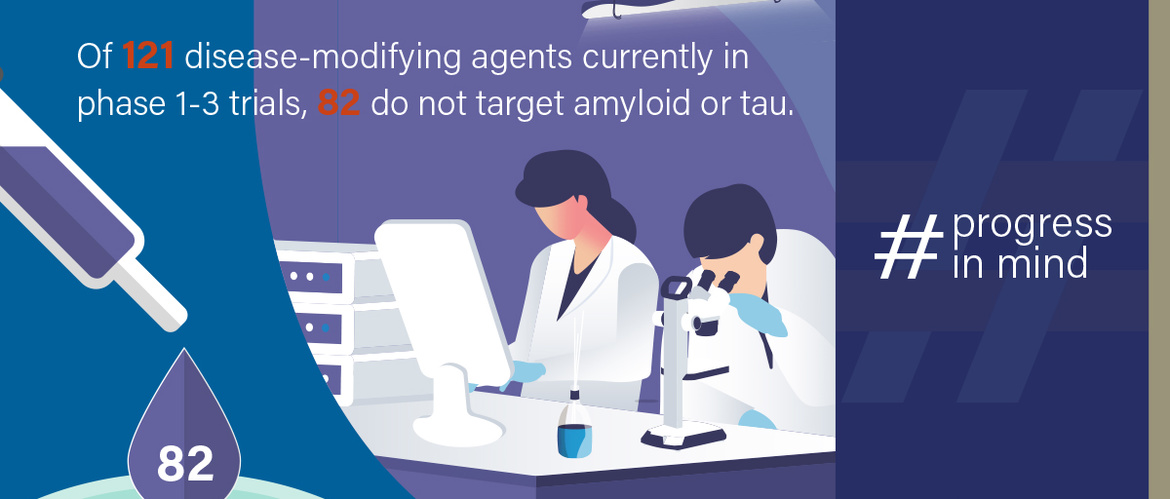
Choose a channel
Check out the different Progress in Mind content channels.

Progress in Mind

Far from running dry, the pipeline is well provided with agents in development for Alzheimer’s disease, and the targets of these drugs show increasing diversity, providing important insights into the evolution of our ideas about the complex etiology of a condition that has seemed as intractable as it is devastating.
Of the many novel mechanisms of action under phase 1-3 investigation in 2020, synaptic plasticity, inflammation, metabolism and vascular function are prominent among agents that are not targeted at tau or amyloid.
According to an analysis shared with the virtual AAT-ADPD meeting by Jeffrey Cummings (Cleveland Clinic Lou Ruvo Center for Brain Health, Las Vegas, Nevada, and Cleveland, Ohio, USA), 59% of current Phase 3 agents are potentially disease-modifying therapies, while 28% are designed to ameliorate neuropsychiatric symptoms and 14% to reverse symptomatic impairment of cognition.
The drug development pipeline includes agents targeting a wide range of pathologies
Plasticity and neuroprotection top
Among the putative disease modifying drugs, 24% are aimed at enhancing synaptic plasticity or neuroprotection. Eighteen percent are designed to tackle inflammation, infection or immunity; and 12% are directed at modifying metabolism or bioenergetics. (Categories reflect the Common AD Research Ontology, or CADRO, system.1)
Of the 55 potentially disease modifying therapies in phase 2, 27% relate to synaptic plasticity and neuroprotection. Twenty percent target amyloid. Eleven percent are directed at metabolism and bioenergetics and 6% at the vasculature.
Changes in the frequency with which various pathologies are being targeted reflect our increasingly complex view of the etiology of AD.2 Interestingly, though -- as Professor Cummings pointed out -- no agents now in phase 1-3 target ApoE4, despite the prominent role of APOE4 as a genetic risk factor.
82 phase 1-3 agents target pathologies other than amyloid or tau
Use will be in combination with amyloid or tau agents
Of 121 disease-modifying agents in phase 1-3 trials, 82 do not target amyloid or tau. But any small molecule currently under development that proves effective in slowing cognitive decline is likely to be used in combination with anti-amyloid or anti-tau therapies, Professor Cummings predicted.
Of the compounds acting on the vascular system3 which are being repurposed for AD, the majority modulate the angiotensin system. Those directed at modifying metabolism and bioenergetics include insulin sensitizers and agents enhancing mitochondrial activity.
Our correspondent’s highlights from the symposium are meant as a fair representation of the scientific content presented. The views and opinions expressed on this page do not necessarily reflect those of Lundbeck.
1. Liggins C, et al. Alz Dem 2014;10:405-408
2. Cummings J. Alzheimers Dement (N Y)2019;5: 272–93
3. Liesz A. Science 2019;365:223-4